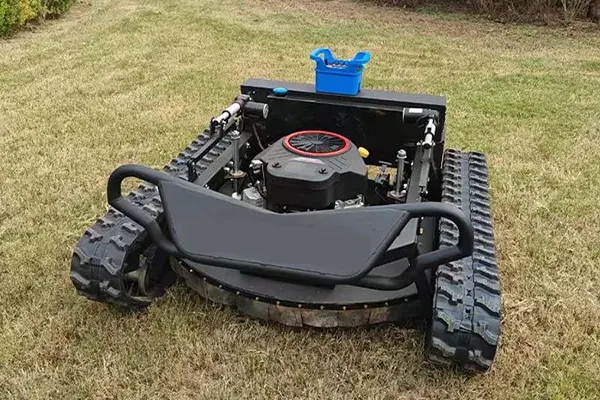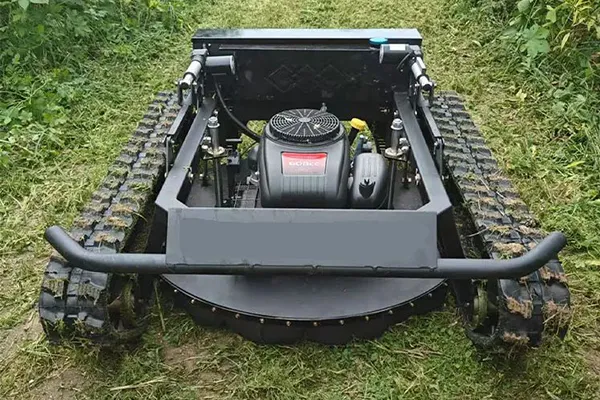Avoid your inquiry is delay response, please enter your WhatsApp/Skype along with the message, so we can contact you at the very first time.
We will reply you within 24 hours. If for urgent case, please add WhatsApp/WeChat: +8613791936882 ,. Or call +86-18678911083 directly.
Are robotic lawn mowers the future of lawn care, or are they overrated? Let’s dive into the potential drawbacks of these automated helpers.
While robotic lawn mowers offer convenience, there are a few significant downsides. These include limited functionality on uneven terrain, high upfront costs, and potential maintenance needs.

robotic lawn mower
It’s clear that while robotic mowers can save time and effort, they might not be the perfect solution for everyone. But what about specific features? Let’s explore some common questions about them.
If you’re thinking of getting a robotic mower, one common question comes up: Do they cut the edges of the lawn?
Many robotic mowers do not mow up to the very edge of the lawn, leaving a strip of grass around the perimeter that you’ll need to trim manually.
While robotic mowers are designed to cover most of the lawn, they typically don’t reach the very edges. This is due to their circular shape and the boundary wire used for navigation. These mowers often leave an uncut strip along fences, flower beds, or around trees, which will need to be tidied up manually. Some high-end models come with more advanced features to minimize this problem, like the ability to detect obstacles more precisely or work in specific zones. However, these models come at a higher price point. Furthermore, the effectiveness of edge cutting can be influenced by factors like the size of the mower and the way it’s programmed to navigate your lawn. Ultimately, unless you are willing to trim the edges every few weeks, this is one of the major inconveniences of robotic mowers.
The durability of a robotic mower’s blades is another point of concern for potential buyers. How long will they last before needing replacement?
Robotic mower blades typically last between 6 to 12 months depending on usage and the type of terrain they cover. Regular maintenance can extend their life.

robotic mower blades
The lifespan of robotic mower blades is often tied to how frequently the mower is used and the conditions it operates in. On average, blades need to be replaced every 6 to 12 months. If your lawn is covered in thick, tough grass or has a lot of debris like twigs or rocks, the blades may wear out more quickly. Some robotic mowers feature self-sharpening blades, which can extend their longevity. However, even with self-sharpening features, the blades can become dull or damaged over time. Many robotic mowers offer blade replacement kits, and it’s a simple process that can be done at home. Regular cleaning of the mower and checking for damage can also help preserve blade life. In any case, blade maintenance is a necessary part of owning a robotic lawn mower, which adds to the ongoing upkeep costs.
It rains often, so can robotic mowers still do their job when the weather isn’t ideal?
Most robotic mowers are designed to handle light rain. However, they may stop working in heavy rain or wet conditions, as it can damage their electronics and affect performance.
Robotic lawn mowers are generally built to be weather-resistant1, and many models can operate in light rain. The mowers typically come with an IP rating, which indicates how well they are protected against water and dust. However, when it comes to heavy rain or puddles, most robotic mowers will stop mowing. This is because the rain can interfere with the mower’s electronic systems, including its sensors and motors. Prolonged exposure to wet conditions could lead to rusting or malfunction. Additionally, mowing wet grass can leave behind clumps of clippings, which could affect your lawn’s health and lead to a mess. If you live in an area where heavy rain is common, you might want to consider a mower with a better water resistance rating, or you may need to adjust the schedule to avoid rainy days.
Before purchasing a robotic lawn mower, it’s essential to know if it can handle the size of your yard. So, how big of a yard can these mowers manage?
Most robotic mowers are ideal for small to medium-sized lawns, ranging from 1,000 to 5,000 square feet. Some advanced models can handle lawns up to 10,000 square feet or more.
The size of the yard that a robotic mower can handle varies greatly depending on the model. For small lawns of up to 1,000 square feet, you can find affordable models that will do the job just fine. If you have a medium-sized lawn (around 5,000 square feet), you’ll want a mower with better battery life and the ability to handle more complex navigation. Larger lawns, like those of 10,000 square feet or more, require more powerful models with extended runtime and more advanced mapping technology to ensure thorough coverage. Some high-end robotic mowers are equipped with GPS technology2 that helps them navigate efficiently across larger yards. They also feature better batteries that last longer, allowing them to mow larger areas on a single charge. However, for very large properties or complex landscapes, robotic mowers may struggle, and traditional mowers might still be a better option.
Robotic lawn mowers offer many benefits, but they also come with their own set of drawbacks, from edge cutting to weather limitations. Consider your needs before investing.